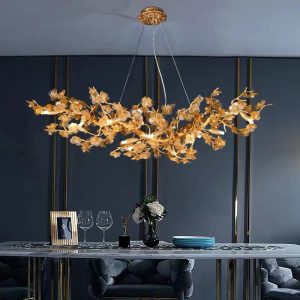
Whether you’re chopping and cooking or hosting dinner parties, the lighting in your kitchen is a vital component of its overall look and feel. And if your lights don’t do your space justice, it could be time to invest in a more up-to-date fixture.
There is no one-size-fits-all solution when it comes to kitchen lighting, as different types of fixtures serve a unique purpose. To get the most out of your kitchen lighting, consider creating layers and pairing the right fixtures with each other to create a cohesive, balanced look.
The first layer of kitchen lighting is task lighting, which provides the essential illumination you need to perform your everyday tasks. This includes pendants, recessed can lights and other recessed or track-mounted fixtures. These should be mounted close to the area you plan to light, so you can adjust the brightness to suit your needs.
Next, you should incorporate accent lighting Bonisis to add depth and dimension to your kitchen. This could be in the form of sconces, table lamps or hanging lamps, and is a great way to highlight art or framed photographs or other wall decor. It’s also an excellent way to showcase vases or other countertop decor. To help reduce glare and maintain proper color rendering, you should choose recessed or under-cabinet lights with high CRIs (Color Rendering Indexes) and low lumens.
For the second layer of accent lighting, you should look to recessed or surface-mounted downlights or track-mounted fixtures that illuminate your kitchen cabinets. These should be angled to avoid illuminating the ceiling and to highlight your cabinets in a flattering manner. This will ensure that you can find what you need when sifting through your cabinets, and will help reduce shadows on the edges of your cupboards.
If your kitchen is open-plan, you should hang statement pendants to bring personality and style into the room. Whether it’s a 70s-inspired sputnik that shouts ‘dinner time’ or a spherical glass fixture that brings elegance and poise, they can really transform an open-plan kitchen.
Finally, you should include some ambient lighting to create a warm and welcoming atmosphere. Depending on the size of your kitchen, this can be as simple as a single sconce or as large as a chandelier. You can also use dimmers to adjust the brightness of your ambient light as the mood changes.
Ultimately, the best kitchen lighting is all about combining the styles you love and finding a system that works with your lifestyle. Whether you’re a master chef who requires plenty of spotlighting or an entertainer who prefers a subtle glow, there is a solution for everyone.
This article is brought to you by a partnership with Benchmarx Kitchens.
The products featured in this article were independently selected by the editorial team at Reeves Journal and based on their own experience and research. However, when you buy through our retail links, we may earn an affiliate commission.
This article originally appeared in the May 2017 issue of Reeves Journal and was updated in July 2017. For more home design ideas, visit Reeves Journal on Facebook.


